Dog owners often observe their canine companions engaging in a variety of behaviors that may seem peculiar, one of which is spinning around in circles when excited. This endearing action can be triggered by different stimuli and is a manifestation of the dog’s excitement or happiness. For example, seeing their owner after a long day or anticipating a fun activity like going for a walk can cause a dog to express their joy in this spinning motion. Understanding why your dog spins when excited requires insight into canine behavior, as it’s not just a quirky habit but a reflection of your pet’s emotional state and energy levels.
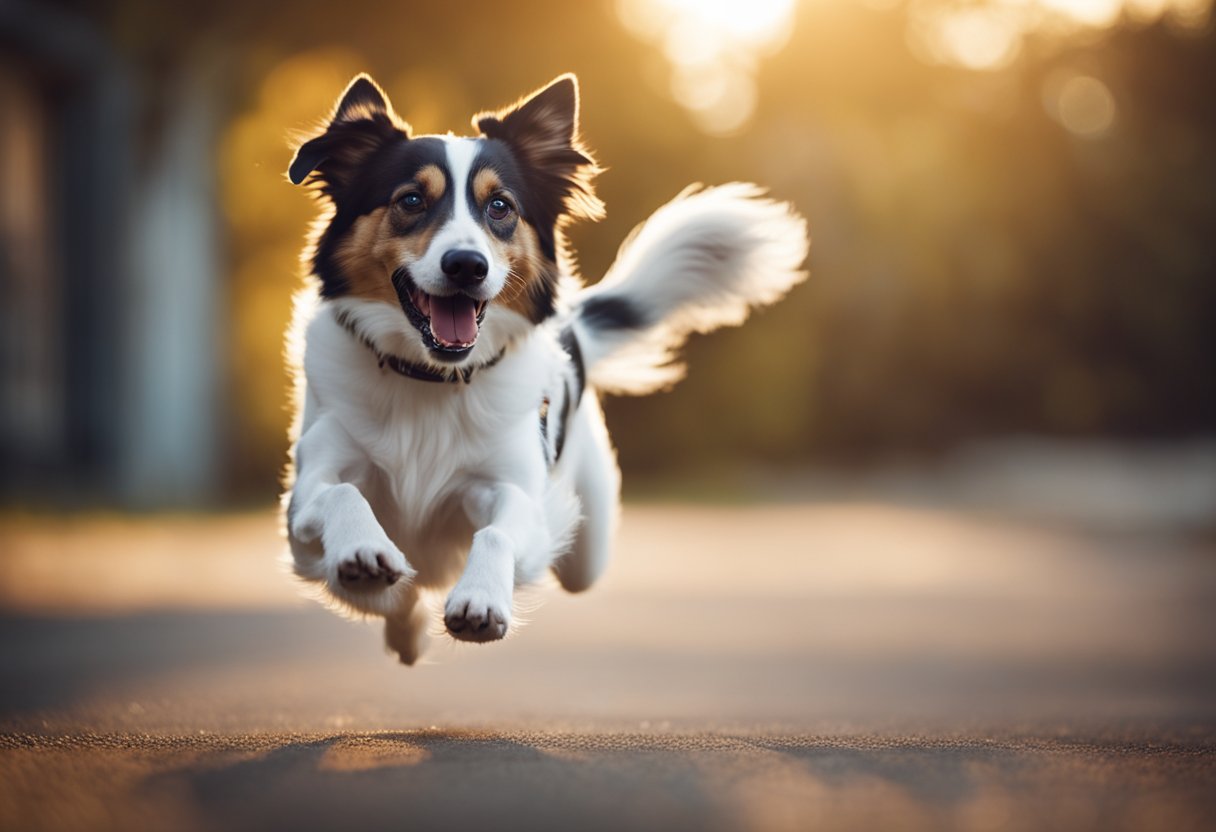
The spinning behavior, often accompanied by what pet parents affectionately call “zoomies,” can also point to a release of pent-up energy. Dogs, particularly young ones or those who are highly energetic, need regular exercise and stimulation. When they remain idle for too long, they may exhibit this sudden burst of energy, which is both a natural and healthy aspect of dog behavior. It is crucial for dog owners to identify the normalcy of such behavior patterns and distinguish them from potential issues requiring attention, such as compulsive behaviors or neurological problems.
Key Takeaways
- Dogs spin in circles when excited as a physical expression of their joy and energy levels.
- Spinning can indicate normal dog behavior, often seen in energetic puppies or when a dog has excess energy.
- Understanding this behavior is important to ensure it’s a healthy expression and not a sign of underlying issues.
Understanding Canine Behavior
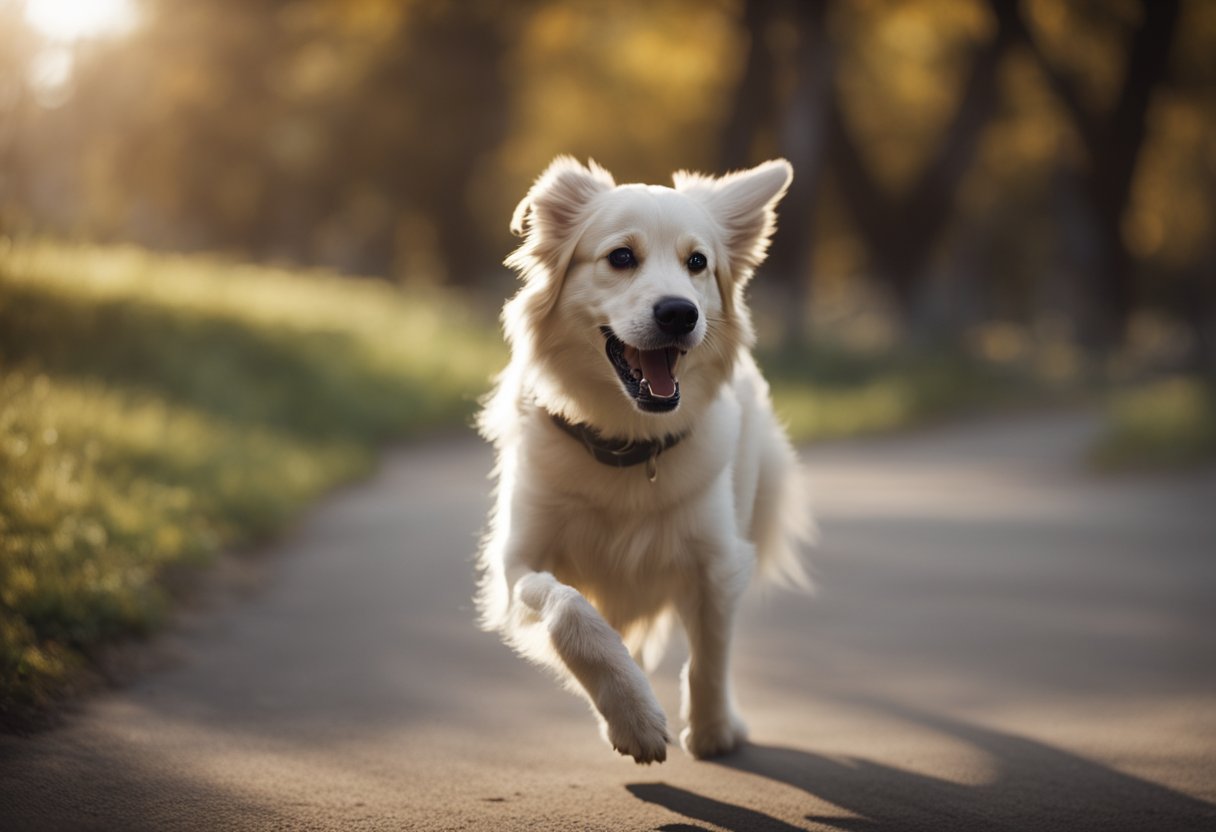
Dogs exhibit a range of behaviors that communicate their emotional state and intentions to others, using their body language and various actions. Analyzing canine behavior, particularly when a dog spins around in excitement, reveals much about their communication, psychological state, and underlying biological mechanisms.
Communication through Body Language
Dogs rely heavily on non-verbal communication to express themselves. Spinning in circles or other body movements can be a dog’s way of showing excitement, attention-seeking behavior, or initiating play. These actions are a normal part of how dogs interact with their environment and the beings within it.
The Psychology of Excitement in Dogs
When dogs experience excitement, they may display a burst of energy, commonly referred to as zoomies. This behavior is a spontaneous way for dogs to release pent-up energy and express joy or happiness.
Typical Behavior Vs. Behavioral Disorders
Though spinning is usually a harmless and normal behavior, excessively repetitive behavior could indicate an underlying issue. Behavioral disorders such as Canine Compulsive Disorder (CCD) may manifest as incessant spinning, showcasing the fine line between natural dog behavior and signs that might warrant a vet visit and consideration of pet insurance.
The Science of Spinning: Vestibular System
The vestibular system in dogs helps with their sense of balance. Spinning without signs of distress could be a playful acknowledgement of this balance system. However, symptoms like nystagmus (rapid eye movement), head tilt, or disorientation while spinning could suggest vestibular dysfunction.
Natural Dog Behavior and Playfulness
Spinning can also be instinctual, rooted in a dog’s natural behavior patterns. It’s a form of playfulness that can be seen when dogs engage in activities that are safe and enjoyable, mirroring actions used in hunting or exploring.
Coping with Nervous Energy
Dogs may also spin when feeling anxious or as a coping mechanism for nervous energy. It is a self-soothing behavior that can provide a sense of security. However, if spinning becomes compulsive behavior, it may require behavioral intervention to ensure the dog remains safe and healthy.
Dog Spinning Explored
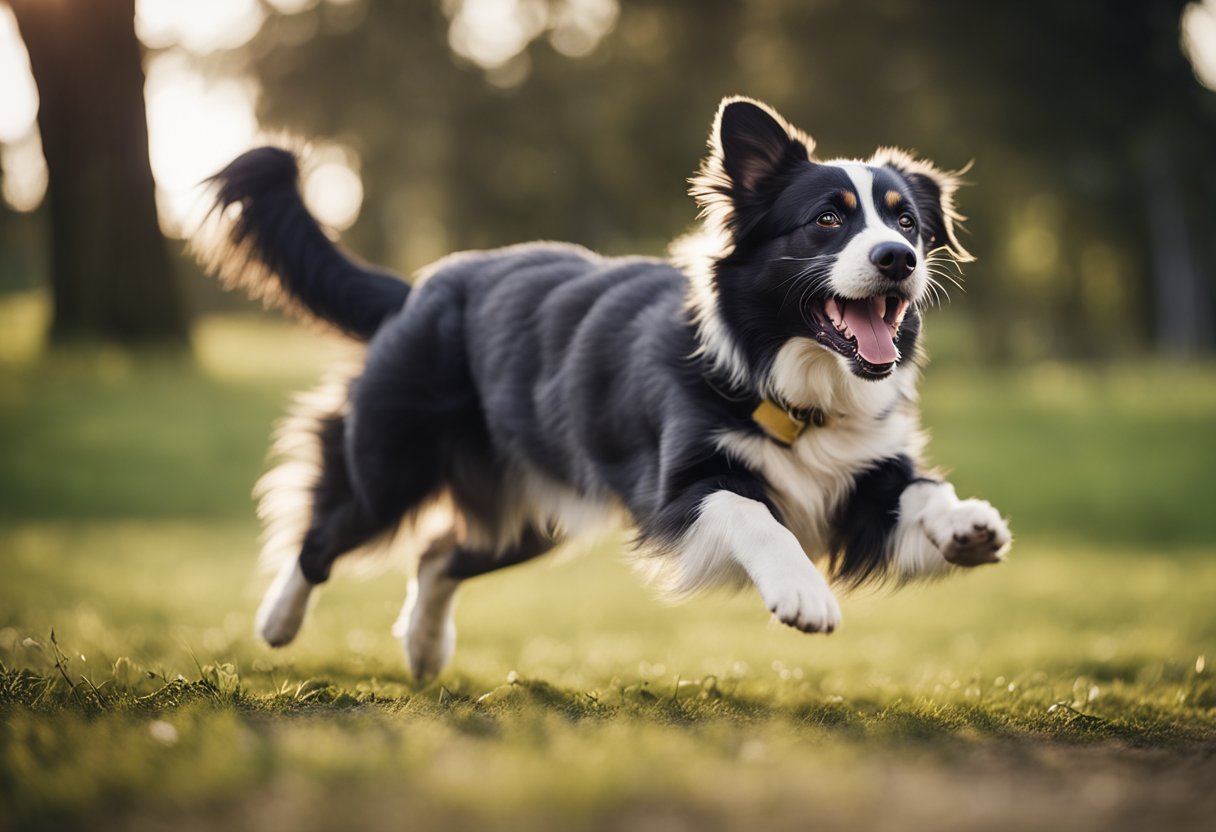
There’s a myriad of reasons why a dog may spin around, ranging from instinctual behaviors to signs of pure enthusiasm. This section lays out the various facets of this peculiar canine conduct.
Securing the Area Before Rest
Dogs often spin in circles before lying down, an instinctive action rooted in their ancestors’ need to flatten grass and check for predators or insects before resting. This behavior ensures a secure and comfortable spot for relaxation.
Pre-Potty Rituals
Spinning and circling are common pre-potty rituals. These repetitive behaviors might also help dogs align themselves with the earth’s magnetic field, simplifying their internal navigation during dog potty time.
Chasing Tails: A Quirky Canine Habit
Tail chasing is a behavior that can stem from a dog’s attempt to catch an irritant on its tail. However, when tail chasing becomes compulsive, it might warrant a veterinary visit, especially if it impedes normal functioning.
Frenetic Random Activity Periods
Frenetic Random Activity Periods, known as FRAPs, embody bursts of energy where dogs spin in circles out of sheer excitement or to use up excess energy. They are a healthy expression of a dog’s vitality.
Spinning and Older Dogs
In older dogs, excessive spinning could indicate canine cognitive dysfunction or dog dementia. It’s a sign that a previously learned pattern of behavior has been disrupted, leading to confusion and repetitive movements.
Identifying and Addressing Problems
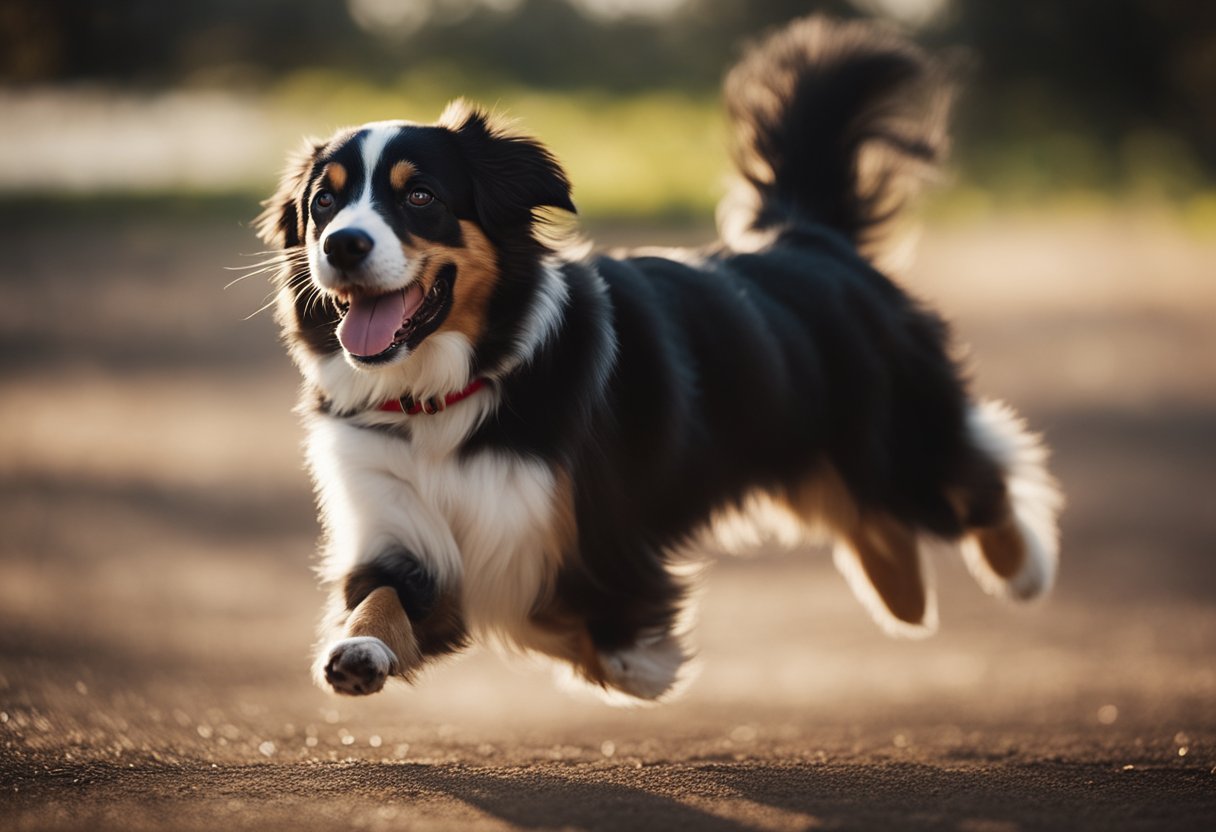
When a beloved canine companion starts spinning more frequently or intensely, it may indicate underlying issues that warrant attention. Owners should assess the behavior critically, considering both medical and environmental factors, to ensure their dog’s well-being.
When Spinning Is a Sign of a Medical Condition
Medical Condition: In some cases, repetitive behaviors such as spinning could be symptomatic of a medical condition. Dogs may circle due to ear infections, vestibular disease, or neurological disorders that disrupt equilibrium or cause discomfort. Observing safety protocols, such as keeping the dog from harm during episodes, is crucial. Owners should monitor the frequency and context of spinning, noting whether it accompanies other symptoms like loss of balance or changes in hearing.
The Role of Pet Insurance in Dog Health
Pet Insurance: Addressing potential medical issues can be costly, emphasizing the role of pet insurance. Having a good pet insurance policy can alleviate the financial strain of tests and treatments, which may include imaging or medication. The peace of mind from being covered may encourage timely veterinary visits, which are essential for maintaining a dog’s health and addressing behavioral disorders early.
Working with a Veterinary Behaviorist
Veterinary Behaviorist: If the behavior is not rooted in physical ailments, it could be a behavioral disorder. In such cases, owners may seek the expertise of a veterinary behaviorist. They can provide specialized intervention strategies to modify problematic behaviors. A behaviorist might recommend structured behavior modification plans that gradually diminish the spinning behavior, ensuring the dog’s safety and well-being.
Considering Dog Walking for Energy Management
Dog Walking: For dogs with pent-up energy, additional dog walking may be a simple yet effective solution. Regular and structured walks help manage energy levels and mitigate excessive spinning behavior. Owners can incorporate interactive play and exercise during walks to provide mental stimulation and physical release, thereby tackling the problem at both ends.
By recognizing when spinning is more than just a quirk and addressing it appropriately, owners can ensure their dogs lead healthier, happier lives.
Frequently Asked Questions
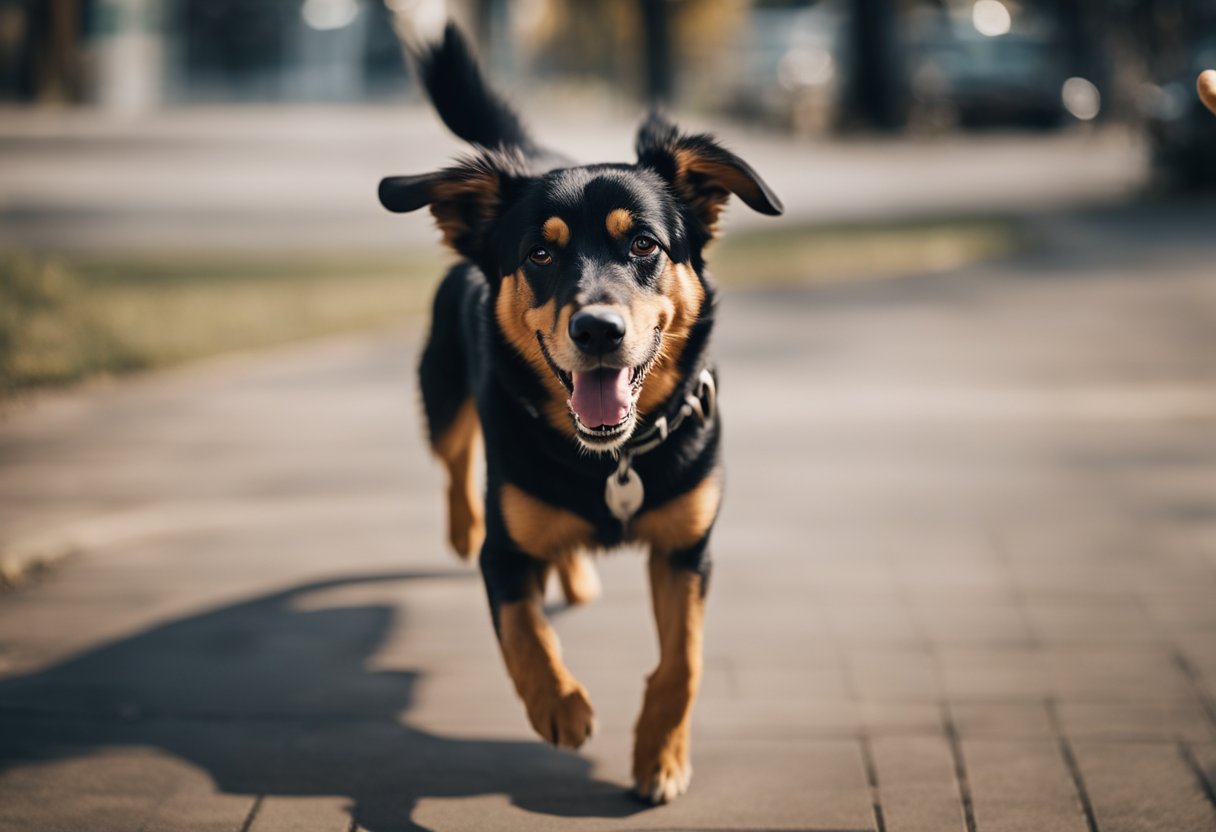
Dogs spinning around when excited is a behavior commonly observed by many pet owners. This section aims to address some of the most common inquiries regarding why canines exhibit this whirlwind of activity.
What causes dogs to run in circles inside the house?
Dogs often run in circles inside the house due to surges of energy or excitement. They may express this behavior after long periods of rest or in anticipation of a high-energy activity. Understanding the root of this behavior can be found by examining how dogs have FRAPs, or Frenetic Random Activity Periods, and how they may sometimes simply have an excess of stored energy.
What is the reason behind dogs spinning in place when they’re about to sit?
When dogs spin in place before sitting, they might be mimicking ancestral behavior that involved flattening grass or scaring away any critters before settling down. This behavior can also be a means to find the most comfortable position or ensure the area is secure.
For what purpose do dogs circle their sleeping area before settling down?
Circling their sleeping area before lying down is a behavior that aligns with dogs’ instinct to make their bed comfortable and safe. In the wild, this circling would help dogs trample down grass and drive away snakes and large insects, creating a secure nest for rest.
Is circling behavior in dogs related to their instinctual habits?
Yes, circling behavior in dogs is often a manifestation of their instinctual habits inherited from their wild ancestors. Circles were historically used for security checks, bedding preparation, and territorial marking.
What does it signify when a dog moves in circles excessively?
When a dog moves in circles excessively, it could be an indication of joy or excitement, but it may also signal a compulsive disorder, especially if the behavior is repetitive and seems out of the dog’s control. Details on such behavioral patterns can be inferred through examples like Canine Compulsive Disorder (CCD).
Can circling behavior be an indication of a neurological issue in dogs?
Circling behavior can sometimes be an indication of a neurological issue in dogs, particularly if it is frequent, persistent, and associated with disorientation or loss of balance. Such symptoms merit evaluation by a veterinarian to rule out conditions that may require medical attention.
